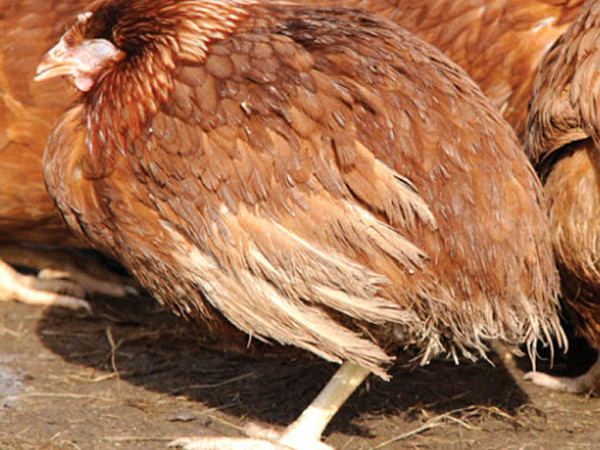

Health management on poultry farms is of chief importance because of the overall economic effect it has on productivity. Even farms stocked with the best breeds that are properly housed and fed on high quality feeds will not grow and produce efficiency under poor health management. For poultry health management to be effective, three principles have to be observed: Prevention, early recognition and early treatment of diseases.
Most diseases on poultry farms are caused by infectious pathogens that quickly spread across the flock especially in commercial farms, with high-stocking density. These pathogens include bacteria, viruses, protozoa and parasites, some which are easily controlled through vaccination while others require proper bio-security measures. Bacterial diseases account for a higher proportion of health problems in poultry farms and as such, one must invest a lot of resources on antibiotics to control them. Antibiotics belong to a category of drugs called “antimicrobials,” and include penicillin (amoxillin), tetracyclines, fluoroquinolones (Cipro drugs) and other formulations that can kill or inhibit the growth of bacteria without causing significant harm to patients.
In poultry, the biggest controversy centres on administering antibiotics used to treat human illness to flocks. The effect of using human drugs to manage diseases in poultry flocks on human health, whether long-term or short-term, remains unknown. The fact, however, is that most approved animal pharmaceuticals are often made in the same manufacturing plants as human pharmaceuticals and will contain the same ingredients as human drugs.
These veterinary drugs have the same colour, shape, and bare the same markings as human drugs. Therefore, given the similarities between the two categories of drugs, the use of human drugs to treat livestock in general poses no threat to livestock neither to human health and they are just as effective as animal drugs.
However, apart from therapeutic purposes, most farmers administer antibiotics (whether human or animal) to poultry in small doses on daily basis to enable the birds’ gain as much as three percent more weight than they otherwise would.
Health Risks
Although it is still unclear why feeding small “sub-therapeutic” doses of antibiotics, like tetracycline, to birds makes them gain weight, research indicates that the antibiotics kill the flora that would normally thrive in the birds’ intestines, thereby allowing them to utilise their food more effectively.
Majority mix these drugs with poultry feeds and water daily as a substitute for healthier living conditions in crowded and unsanitary environment and to promote growth.
The problem with feeding antibiotics to animals that are not sick is that it kills weak bacteria and creates the perfect environment for antibiotic-resistant bacteria to multiply and thrive.
Due to public health risks associated with antibiotics’ resistance, there is need to end the use of low doses of medically important antibiotics to prevent the development of antibiotic resistant bacterial strains. By eliminating routine, non-therapeutic uses of antibiotics, the poultry industry can reduce the potential for antibiotic resistance and ensure these important drugs remain effective for treating human.
Some argue that there is no harm in sub-therapeutic uses and it contributes little, if anything, to the burden of human antibiotic resistance. A key question is can antibiotic use in animals promote the development of hard-to-treat antibiotic-resistant bacteria that make people sick?
And if it can, are the illnesses rare occurrences, and the risks theoretical, or could current usage in animals pose a serious threat to human health. Research has indicated that there is a connection between antibiotic use in animals and the loss of effectiveness of these drugs in human medicine. Take an example of salmonellosis. Research has shown that the continuous sub-therapeutic use of amoxicillin in livestock led to the flow of a distinct salmonella strain to human through livestock products, which later on acquired clinical salmonellosis.
The biological explanation behind this is that misuse and overuse of antibiotic drugs creates selective evolutionary pressure that enables antimicrobial resistant bacteria to increase in number more rapidly than antimicrobial susceptible bacteria, and thus, raises the opportunity for individuals to become infected by resistant bacteria.
So how does antibiotic resistant pathogenic bacteria develop? Similar to how immunisation helps the human body fight disease by exposing the immune system to small amounts of a virus or bacteria, when bacteria are continually exposed to small amounts of antibiotics, they can develop immunity. It’s a case of “survival for the fittest,” with the strongest bacteria that are least susceptible to a specific antibiotic, surviving, adapting and multiplying.
These are called “resistant bacteria” because they have adapted to the point where antibiotics are no longer an effective means of killing them. As a result, some antibiotics have lost their effectiveness against specific infectious diseases. Nevertheless, the livestock industry continues to argue that while antibiotic use may have something to do with antibiotic resistance in bacteria on the farm, it is not an important human health issue, and little change in current practices is needed.
However, little is understood about the long-term effect of misuse of these drugs on human health. The frequency of ingesting drug-resistant pathogen is not well-documented and as such most people just rid out an infection and it fades into the background of the numerous cases of food borne illness reported annually in the country.
 Contact Jaguza Support
Contact Jaguza Support